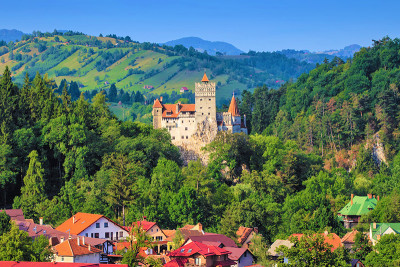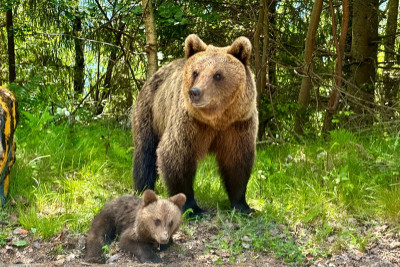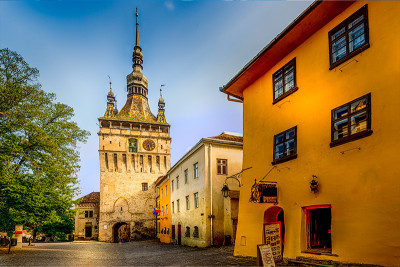Romania is a predominantly Christian country, and so the two biggest celebrations of the year are Christmas and Easter. What you may not have known is that Romania is not just Christian, but Eastern Orthodox, and the Orthodox Church celebrates Easter on a different day than Catholics and many Protestants. Normally, the Orthodox Church celebrates Easter after the Catholic Church, in part because the Orthodox Church follows the Julian calendar while the Catholic Church follows the Gregorian calendar.
Traditional Easter Celebrations In Romania
If you have time off from school or work and are able to spend Easter in Romania, we would highly recommend it! Because over 90% of the country is Christian, nearly everyone joins in on the celebrations, making this truly a country-wide party!
If you are unfamiliar, 6 weeks before Easter, the Lentin fast begins. People choose something to give up, to show their love for God. Examples might be alcohol, meat, or tobacco. This is not to be viewed so much as a sacrifice, but as a happy or generous way to prove their love to God.
As Easter approaches, there are a couple more holidays to be observed. One is Palm Sunday, which in Romania is known as Duminica Floriilor or just Florii. This is celebrated the week before Easter Sunday. Florii actually roughly translates to “Flower Day” and is a day to celebrate all the people who have flower-based names. It is called Florii because the day was originally dedicated to the Roman goddess Flora.
Now Palm Sunday is the feast day to celebrate Jesus’ entrance to Jerusalem. Also on this day, willow branches are brought into the church to be blessed. The branches are passed out to all the parishioners and the parishioners bring home the branches to protect their homes and to ward off evil spirits.
The week after Palm Sunday is the Holy Week, as it is the week leading up to Easter. The Thursday of Holy Week is known as Maundy Thursday, also known as Holy Thursday. This is the day that Jesus washed the feat of the Apostles, and some churches also have a washing of the eet to commemorate this day.
After that is Good Friday, sometimes called Black Friday. This is the day that Jesus was crucified on the cross and, hence, is a day of mourning. Many Romanians will fast the entire day and go to church in the evening.
Another Romanian Easter Tradition is known as the Holy Light. This is the night before Easter, when Romanians bring home a candle from church. They light the candle at home, signifying the triumph of good over evil.
Finally, we have Easter Sunday. All the religious Christians go to church on Easter, to celebrate the Resurrection of the Lord, Jesus Christ. Easter is celebrated with family and close friends and with plenty of food.
A classic Romanian Easter tradition is to paint hard boiled eggs, to use in egg tapping competitions. In these competitions, eggs are tapped against each other to see whose breaks first. It is thought that the eggs that your egg taps on Easter are the people that you will see in the afterlife.
And the first person who taps the egg on Sunday has to say “Cristos a înviat” (meaning, “Christ has resurrected). The next person must say “Adevarat a înviat” (meaning, “indeed, He has resurrected). Another belief is that the person whose egg lasts the longest without being broken is the person that will live on the longest.
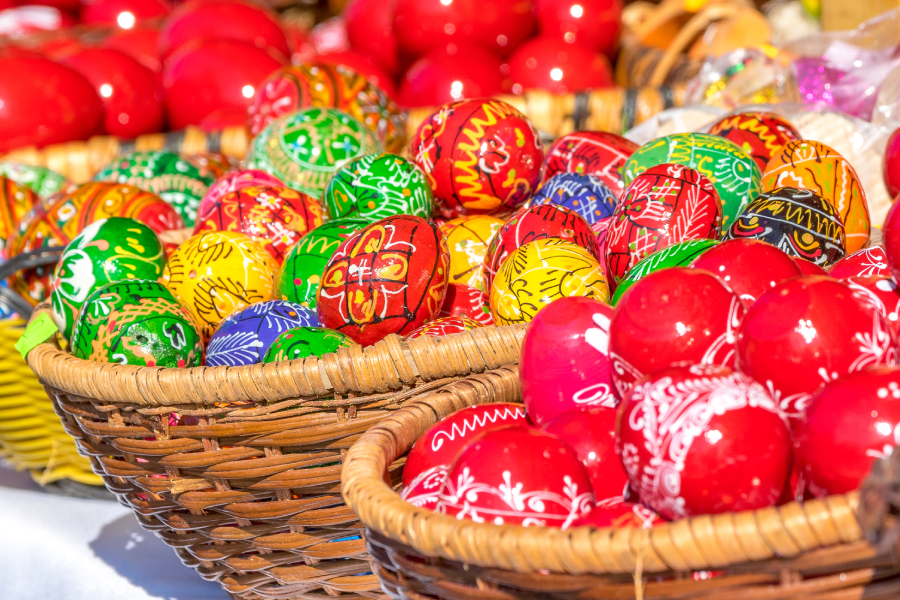
Romanians paint their eggs a variety of colors, but it is most traditional to paint them red, to remember the blood that Jesus shed for us on the cross. There is also a story that Mary, Jesus’s mother, laid a basket of eggs at the foot of the cross when Jesus was crucified.
Apparently, his blood dripped into the basket and painted the eggs red. Still, others paint them blue, yellow, green and a variety of other colors too. Those who get really into egg decorating will decorate with complex traditional designs and motifs. Bukovina, a region on the Romanian-Ukrainian border, is especially well known for the tradition of painted eggs.
The region even has a Museum of Decorated Eggs in Vama. Around Easter time you can find dried, hollowed-out egg shells that are beautifully decorated with paint at local markets and fairs.
Traditional Foods During Easter Time In Romania
There are a variety of traditional dishes that many Romanians choose to make on Easter. Often, the center of the meal is lamb, which can be prepared in a variety of ways.
Drob De Miel
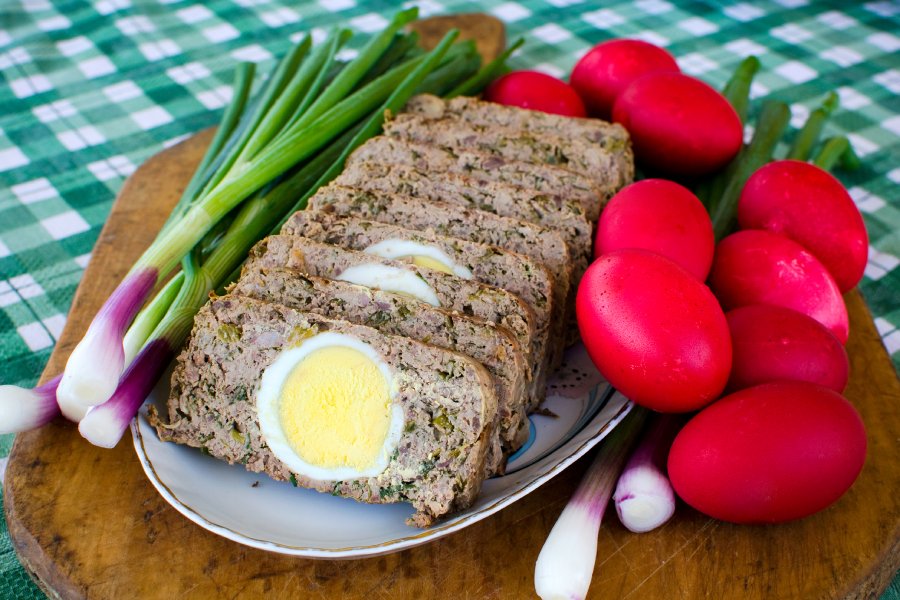
This dish is basically a lamb meatloaf. It is made out of minced lamb offal (lamb organs), green onions, bread soaked in milk, dill, parsley, and garlic. All of these ingredients are mixed together and baked in a loaf pan. In the middle of this loaf, however, are also whole boiled eggs. This dish is served cold.
Pasca
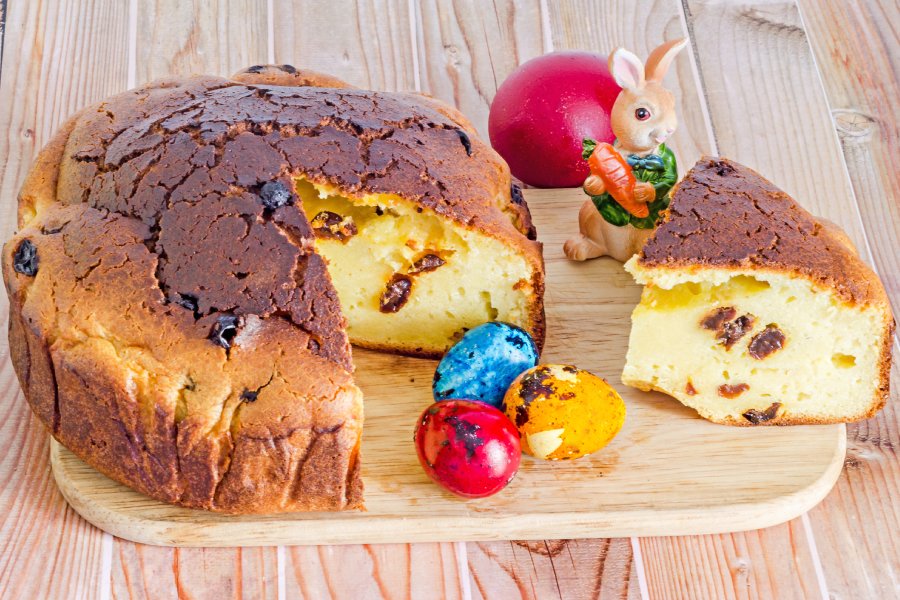
This is a traditional cheesecake that is super popular throughout the country. It is different than a typical New York cheesecake, although the recipe varies throughout Romania. The crust is a little thicker and often bread-like, and the cheese filling is made out of sweet, fresh cow cheese. It sometimes has raisins and can be made into different flavors. It is called Pasca after the Romanian word for Easter, Paste.
Cozonac
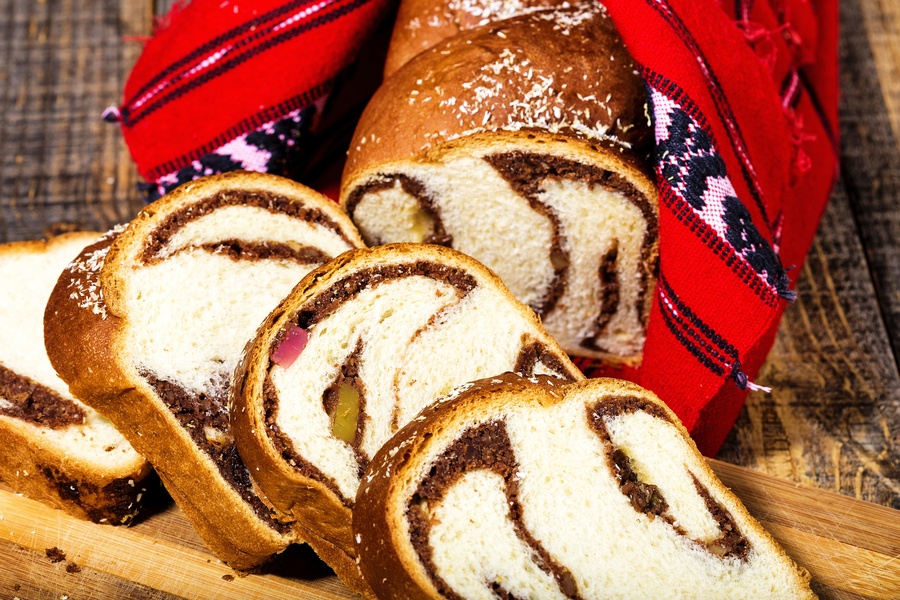
This is a sweet leavened bread that is made with swirls of rum, raisins, and walnuts. Although this is a celebratory bread, it is different from Pasca in that it is made for holidays other than just Easter, such as Christmas!
That is the quick overview of celebrating Easter in Romania! If you have never been to Romania, it is an absolutely beautiful country to vacation in, and during the Easter season it is even better. The whole country joins in on the festivities and you are sure to enjoy your time during these holidays!
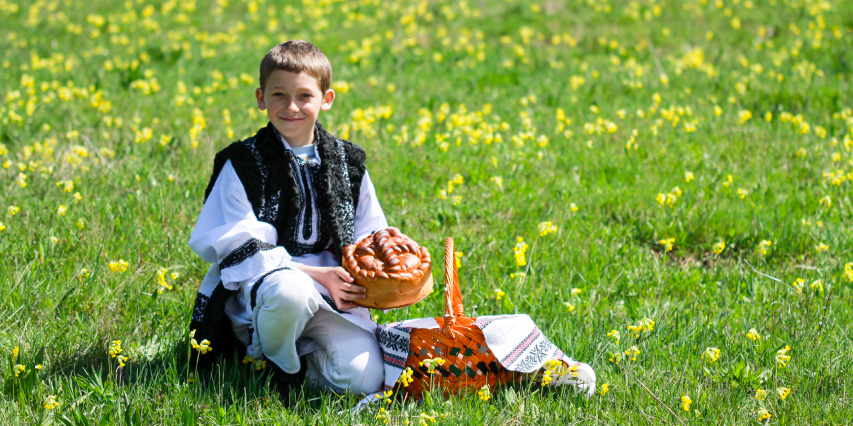
 ES
ES
 IT
IT
 DE
DE
 FR
FR
